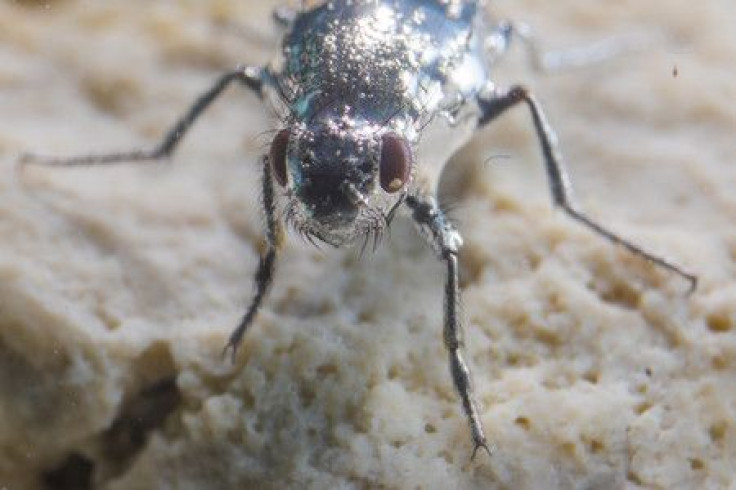How Do Mono Lake Flies Stay Completely Dry Even When Underwater?

The alkali fly that inhabits Lake Mono near Yosemite National Park is an unusual and wonderful insect. Not only because other than bacteria and algae, it is the only thing that can survive the highly saline waters of the lake, but also because it stays completely dry while underwater.
Two researchers, Michael Dickinson from California Institute of Technology (Caltech) and Floris van Breugel from University of Washington, decided to study the behavior of Ephydra hians (the scientific name for the Mono Lake fly), which was described in 1872 by writer Mark Twain in his travel memoir “Roughing It.”
“You can hold them under water as long as you please — they do not mind it — they are only proud of it. When you let them go, they pop up to the surface as dry as a patent office report, and walk off as unconcernedly as if they had been educated especially with a view to affording instructive entertainment to man in that particular way,” Twain wrote of the flies.
Dickinson, who specializes in insect flight, got interested in the flies during a trip to Mono Lake 22 years ago, a Caltech statement said Monday. Along with van Breugel, he published a paper in the journal Proceedings of the National Academy of Sciences characterizing “the unique adaptations of the Mono Lake fly and the mechanisms it utilizes to crawl underwater without getting wet.”
The lake itself is three times more salty than the ocean, and also has large amounts of borax and sodium carbonate — ingredients of soap or detergent — giving the water an almost oily texture. The high salinity makes the lake uninhabitable for vertebrates, including fish. So the fly can live there free from the danger of predators, and has plenty of food too.
All insects are water-repellent or hydrophobic, that allows them to exist in a variety of wet environments — such as rain or dew. Many of them have a coat of bristly hair covered in a waxy material, and water slides off it, keeping the insects dry. But Mono Lake’s specific chemistry allows its water to get past this hair coat of most insects. The lake’s surface has a layer of negatively charged ions that would be attracted to the positive charge on an insect’s skin, pulling the water in between the individual hair strands on its body.
E. hians survives in, in Dickinson’s words, “perhaps the wettest water in the world” by creating a protective layer of air around its body, like an air bubble, when it enters the water. But it is not an ordinary sort of bubble.
“This bubble is a result of an extreme water-repelling phenomenon called superhydrophobicity. The flies are able to do this, the researchers discovered, because they are hairier than the average fly and coat their bodies and hairs with waxes that are particularly effective at repelling the carbonate-rich water. They also have large claws on their feet, which allow them to crawl on underwater rocks while resisting the naturally buoyant force of the bubble. Remarkably, the bubble does not encase the fly’s eyes, allowing the fly to see underwater without the bubble’s distorting effect,” the researchers explained in the statement.
Other flies, including close relatives, do not exhibit the same sort of performance, and would not survive taking a dip in Mono Lake. The researchers also found the Mono Lake flies lost their superhydrophobic ability if their wax was dissolved.
“It’s not that Mono Lake flies have evolved a new and unique way of remaining hydrophobic — it’s that they’ve amplified the normal tools that most insects use. It’s just a killer gig. There’s nothing underwater to eat you and you have all the food you want. You’ve just got to dive in perhaps the most difficult water in which to stay dry on the planet. They figured it out, and so get to enjoy an extremely unique life history. It’s amazing how the evolution of such small-scale physical and chemical changes can allow an animal to occupy an entirely new ecological niche,” Dickinson said.
The paper, titled “Super-hydrophobic diving flies (Ephydra hians) and the hypersaline waters of Mono Lake,” appeared online Monday.
© Copyright IBTimes 2024. All rights reserved.











